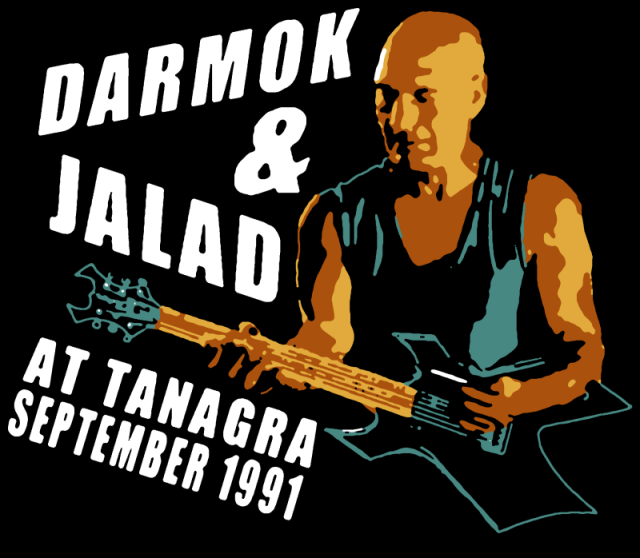The film Arrival and the tv episode “Darmok” in Star Trek: The Next Generation acknowledge the idea of linguistics. It exhibits how it affects our cognitive perception, or rather how it is part of our cognitive perception. Language influences how we understand who and what is around us.
Star Trek: The Next Generation
In Module 2, we briefly discussed embedded cognition, which acknowledges our interaction with the environment as a part of our cognition. The context within our physical and social environments are considered an important piece of our cognition. Embedded cognition goes hand in hand with this episode.
In one scene, Dr. Crusher, Data, Riker, and Deanna are seated together. Data and Deanna explain that the Tamarians communicate through imagery, specifically imagery of their mythological history. Deanna mentions how it’s like saying, “Juliet on her balcony”, to which Dr. Crusher adds, “An image of romance.” Riker mentions the possibility of being able to communicate with them with this information. However, it’s not the case. Dr. Crusher says, “If I didn’t know who Juliet was, or what she was doing on that balcony, the image alone wouldn’t have any meaning.” Essentially, if someone didn’t know the story of Romeo and Juliet by Shakespeare, they wouldn’t know the context of “Juliet on her balcony”, and therefore no emotions or ideas would be evoked. This is the issue the crew has with the Tamarians. They have trouble depicting the Tamarians’ imagery because they don’t know their mythological history. Embedded cognition takes on a large role here. Additionally, the discussion of meaning in the VoiceThread is active in this scene. The idea of the meanings we get from language being influenced by interactions and experiences is demonstrated. The Tamarian language would produce more meaning to the crew if they experienced the same history. That is why Picard reads a Greek mythology book at the end of the episode- to connect his personal mythology history with other species’ and produce meaning. This is like Simulation Theory in Module 3, which is when you can simulate others’ feelings in a situation based on your own experiences.

Arrival
This movie reveals how the body, language, and cognition play a role together. There is a scene when Louise writes her name on a whiteboard and points to herself saying, “Louise. I am Lousie.” She was attempting to teach the heptapods her name, but to no avail. She then risks her safety and removes her hazmat suit. She says, “They need to see me.” She touches the screen with her hand, to which a heptapod copies. She says, “Now that’s a proper introduction.” Ian ends up repeating her actions, removing the hazmat suit and saying his name while it’s written on the whiteboard. The heptapods then share their names in their written language. Louise recognizes that she must use her body to fully express herself and connect with the heptapods. According to the VoiceThread, cognitive linguistics see language as “embedded in the… interactions with the world.” Louise and the heptapod placing their hands on the screen allow them to truly connect for the first time through their physical interactions, and therefore allows the heptapod to understand her intentions and what she means. Staying in the hazmat suit creates a disconnect, as it is more of a scientific observation between the humans and heptapods rather than a true connection.

Conclusion
Star Trek: The Next Generation and Arrival both share the importance of bodily experiences and interactions with the environment in order to gain an understanding within language.



